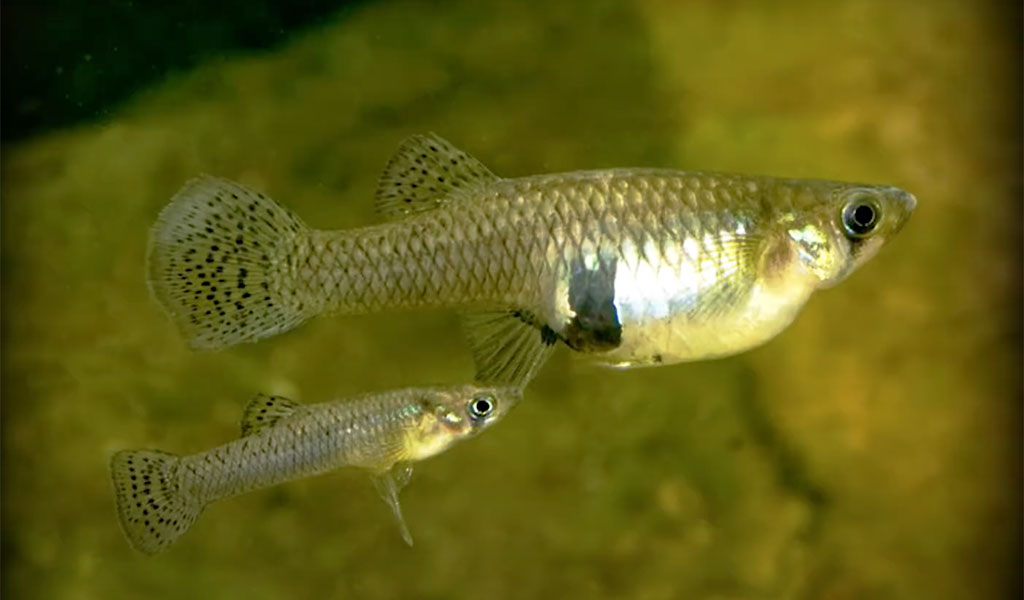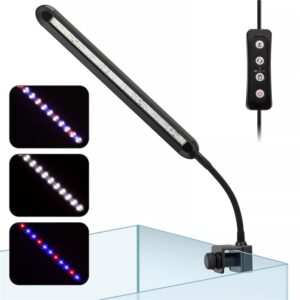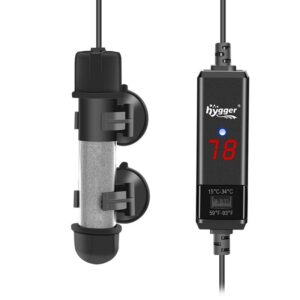Except for piranhas and common ornamental fish, like neon tetras, cichlids, and guppies, there are mosquito fish. They are fish famous for controlling the population of mosquitoes. If you know little about mosquito fish, it does not matter. In today’s article, we will get into the mosquito fish. And we will share a short but interesting aquarium story about mosquito fish. After reading, you will have a much better understanding of mosquito fish. Rant over, let’s dig in.
Content Table
What are mosquito fish
Mosquito fish are freshwater fish native to North America. They consume mosquito larvae and hence can be used to control mosquitoes at home. It is said that adult mosquito fish can consume up to two thousand mosquito larvae per day. Considering the contribution to mosquito control, some people give mosquito fish the title – the hero of mosquito control.
Compared with other freshwater fish, mosquito fish are small. Commonly, females are larger than males. The females can grow up to 2.8 inches (7 cm), while the males reach 1.6 inches (4 cm).
Also, mosquito fish come in gray, featuring a large and white abdomen, an upturned mouth, plus rounded dorsal and caudal fins. Besides the pelvic fin, there are small black spots on other fins. Furthermore, there are black strips along the back and the end of the tail.
Next, let’s know more about mosquito fish in the table below.
| Family | Poeciliidae | Size | Female: 2-2.8 inches Male: 1-1.6 inches |
| Scientific name | Gambusia affinis | Lifespan | 1.5-3 years |
| Common name | Mosquito fish /Western Mosquitofish /Live-bearing Tooth-carp /Gambusia /Gambezi | Diet | Omnivore (e.g. zooplankton, mosquito larvae, and other invertebrates) |
Features of mosquito fish
Mosquito fish can be found in shallow water. It possesses great adaptability and can survive in living environments with a low oxygen level, saline water, and a high temperature approaching 108 ℉ (42 ℃) for a short period. Nonetheless, mosquito fish prefer living in tanks with a water temp ranging from 77 ℉ to 86 ℉. In this case, to provide a habitable living environment and make your fish live longer, adding an aquarium heater can be a great choice.

Aside from that, mosquito fish are aggressive and predatory. They would nip other fish’s fins and injure or consume small fish. So, when you set up a mosquito fish aquarium, be cautious about tank mates. For instance, slow-moving fish may not be an excellent option.
Additionally, the minimum tank size of mosquito fish should be 10 gallons. But, mosquito fish are fond of living in groups. Therefore, a fish tank keeping schooling of mosquito fish can be larger than 10 gallons. So they can have plenty of room to swim and explore around the tank.
Given below are some requirements for a mosquito fish aquarium.
| Ideal water temperature | 77-86℉ | Nitrate level | Less than 20 ppm |
| pH level | 6.5-8.0 | Reproduction | Viviparous |
| Ammonia level | 0 ppm | Temperament | Aggressive |
| Nitrite level | Nitrite level | Minimum tank size | 10 gallons |
Aquarium story of mosquito fish
Seeing that introducing mosquito fish is effective in dealing with mosquitoes. As a result, mosquito fish are introduced to reduce the population of mosquitoes, during the 1920s-1950s, mosquito fish were used to eliminate malaria in Sochi, Russia. Then a monument was constructed in Sochi to commemorate it. Until now, mosquito fish are still a biological control method to deal with mosquitoes in some places.
Key takeaways
Actually, mosquito fish do make sense in reducing the population of mosquitoes. However, mosquito fish thriving will cause ecological impacts. As mosquito fish flood in, it can be a threat to indigenous fish, leading to the reduction or even disappearance of indigenous species. Thus, though mosquito fish are beneficial in eliminating malaria, it also threatens the ecosystem. By the way, never introduce the mosquito to the wild. Otherwise, the local ecological environment will suffer destroyed.
That is it. For additional ideas about mosquito fish, welcome to share with us in the comment, we are happy to receive your sharing. Plus, if you want to know more amusing aquarium anecdotes, just stay tuned to hygger aquarium anecdote. We will share more in later blogs. Finally, thank you for taking the time and we hope this article helps.


Leave a comment